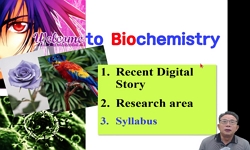<P><B>Abstract</B></P> <P>Amino acids (glycine and alanine) and ionic liquids ([BMIM][BF<SUB>4</SUB>] and [BMIM][I]) were examined for their inhibition effects on CH<SUB>4</SUB> hydrates with expe...
http://chineseinput.net/에서 pinyin(병음)방식으로 중국어를 변환할 수 있습니다.
변환된 중국어를 복사하여 사용하시면 됩니다.
- 中文 을 입력하시려면 zhongwen을 입력하시고 space를누르시면됩니다.
- 北京 을 입력하시려면 beijing을 입력하시고 space를 누르시면 됩니다.



Experimental and computational investigation of methane hydrate inhibition in the presence of amino acids and ionic liquids
한글로보기https://www.riss.kr/link?id=A107427385
- 저자
- 발행기관
- 학술지명
- 권호사항
-
발행연도
2019
-
작성언어
-
- 주제어
-
등재정보
SCI,SCIE,SCOPUS
-
자료형태
학술저널
-
수록면
632-640(9쪽)
- 제공처
- 소장기관
-
0
상세조회 -
0
다운로드
부가정보
다국어 초록 (Multilingual Abstract)
<P><B>Abstract</B></P> <P>Amino acids (glycine and alanine) and ionic liquids ([BMIM][BF<SUB>4</SUB>] and [BMIM][I]) were examined for their inhibition effects on CH<SUB>4</SUB> hydrates with experimental and computational approaches. Both amino acids and ionic liquids functioned well as thermodynamic hydrate inhibitors, by shifting equilibrium curves of CH<SUB>4</SUB> hydrates toward harsh conditions. However, powder X-ray diffraction patterns indicated that amino acids and ionic liquids did not affect the hydrate structure because they were not included in the hydrate cages due to their large molecular size. Gas uptake measurements showed that the conversion of water into gas hydrates and the formation rates of CH<SUB>4</SUB> hydrate were significantly influenced by inhibitors. Density functional theory calculations indicated that [BMIM][BF<SUB>4</SUB>] had a larger potential than glycine to inhibit gas hydrate formation by giving a more negative interaction energy between a cage and an inhibitor molecule. The time-dependent Raman spectra collected during CH<SUB>4</SUB> hydrate formation demonstrated that [BMIM][BF<SUB>4</SUB>] hindered CH<SUB>4</SUB> molecules from occupying small (5<SUP>12</SUP>) cages, whereas glycine had a strong influence on large (5<SUP>12</SUP>6<SUP>2</SUP>) cages of sI hydrates. The experimental and computational results provide a better understanding of inhibition mechanisms of gas hydrates and thus can contribute to the improved control of hydrate formation in oil and gas pipelines.</P> <P><B>Highlights</B></P> <P> <UL> <LI> We examine CH<SUB>4</SUB> hydrates in the presence of inhibitors for hydrate control. </LI> <LI> We use amino acids and ionic liquids to examine inhibition mechanisms. </LI> <LI> Inhibitors do not affect the structure of CH<SUB>4</SUB> hydrate. </LI> <LI> Glycine and [BMIM][BF<SUB>4</SUB>] inhibit large 5<SUP>12</SUP>6<SUP>2</SUP> cages and small 5<SUP>12</SUP> cages, respectively. </LI> </UL> </P>




 ScienceON
ScienceON



